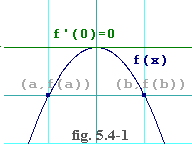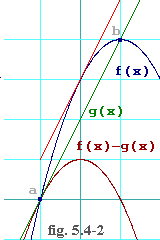

Once again I ask you to journey in time back to the old west and take a train ride. On a particular day in 1888, a Union Pacific train left the station in Denver at noon bound for San Francisco. But before departing, the switch-yard workers coupled to it the private car of one J. Morgan Prescott, owner of banks, railroads, cotton mills, and coal mines. Two words that describe him best are tycoon and temperamental. For they weren't but ten minutes out of the station when Mr. Prescott asked his valet for a glass of Napoleon Brandy. When the valet returned moments later with a glass of lesser brandy, Prescott sniffed at it and exclaimed,
"What manner of tomfoolery is this? I asked you for Napoleon Brandy. Did you even look at the label?"
"Yes sir. But the only brandy on this train is from Seneca Falls, New York."
"And did I not ask you to purchase Napoleon Brandy while we were in Denver?"
"I tried, sir. The wine merchant promised me it would be here, but his man failed to show up before the scheduled departure."
"Well," thundered Prescott, "I suppose I'll have to fix this situation myself." And with that he stormed out of his car and didn't stop till he had reached the engine.
"Get back to your seat, sir," said the engineer. "You really shouldn't be here."
"Don't give me any lip. I'm a major stockholder in this railroad. Get this train on its way back to Denver this instant!"
"But sir..." the engineer began. But Prescott gave him such a scowl that the frightened engineer turned to his brakeman and signaled him to begin applying the brakes.
"Don't bother stopping," shouted Prescott. "That takes way too long. I want this train heading for Denver right now."
Surely you recognize the absurdity of Mr. Prescott's demand. But what is it that makes the thought of the train, cruising at say 30 miles per hour, instantly reversing its direction seem absurd? It is this: both the distance the train is from the Denver station and the train's speed are continuous functions of time. We shall assume that there are no loops in the track that the train can turn around on. If it is to get back to Denver, it must do so going backward on the same track it left Denver on. It seems common sense that for a train that left the Denver station to get back to the Denver station, it would have to stop, at least momentarily. This is the essence of a principle called Rolle's Theorem.
Rolle's Theorem
says this: if you have a function, f(x), and
you have two points, a and b (we shall assume that
Read it over a few times to make sure you understand what it is asserting. Notice that the continuity requirements are on an interval that includes the endpoints, a and b -- that is a closed interval.
In the case of the train, we know that at noon (so let a be noon),
the train was at the Denver station. Mr. Prescott would like it to be
there again at some time in the immediate future (so let b be
that time). If f(t) is the distance the train is from the
Denver station as a function of time, t, then Mr. Prescott is
demanding that
Another way to put Rolle's Theorem, if you'll forgive me for mangling a Grateful Dead lyric is:
Like a steam locomotive rollin' down the track,
If a function don't stop, it ain't never comin' back.

That lyric is, of course, subject to the continuity requirement stated previously -- trouble is the word "continuous" doesn't fit easily into a song lyric.
Figure 5.4-1 gives you a picture of what's going on. The blue trace
shows a function. At points a and b, the function
yields the same value, that is,
There is a possibility that you will be asked to prove Rolle's theorem on an exam. Its proof follows easily as a consequence of two other theorems -- The Extreme Value Theorem and the Intermediate Value Theorem. You don't need to know the proof of The Extreme Value Theorem (unless your instructor has, in his or her cruelty, said you need to know it), and you probably don't need to know the proof of the Intermediate Value Theorem either, but you do need to understand what each of them asserts.
The Extreme Value Theorem asserts that if a function is continuous over a closed interval, it has a maximum and a minimum on that interval. In other words, there is an xmax on the closed interval where f(xmax) gives you a value that is never exceeded for any x on the closed interval. Likewise there is an xmin where f(xmin) is such that f(x) never goes lower than that for any x on the interval.
The Intermediate Value Theorem asserts that if a function, f(x),
is continuous on the interval,
In the case of Rolle's Theorem, both f(x) and f'(x)
are presupposed to be continuous over a closed interval,
If f(x) is constant, then f'(x) is zero everywhere. So Rolle's Theorem is trivial for constant functions.
We prove the case for nonconstant f(x) in a manner popular with mathematical proofs. We shall assume the opposite of Rolle's theorem and derive a contradiction.
Suppose that f'(x) is nonzero everywhere on the closed interval. Then The Intermediate Value Theorem makes it clear that if f'(x) is greater than zero anywhere on the closed interval, it must be greater than zero everywhere on the closed interval. Why? Because if f'(x) changes sign anywhere on the closed interval and is continuous, The Intermediate Value Theorem says that there must be an x that makes f'(x) be zero. And we have supposed that it is not zero anywhere. You can make the identical argument to show that if f'(x) is less than zero anywhere on the closed interval, it is less than zero everywhere on the closed interval.
If f(x) is not constant then it has at least one point at which it is different from f(a) and f(b). If f(x) is greater than f(a) and f(b) at such a point, then we know that f(x)'s maximum (which it must have due to The Extreme Theorem) cannot be at either of the end points. Call that point, xmax.
If f'(x) is greater than zero everywhere on the closed interval,
then f(x) must be increasing everywhere on the closed
interval, including at xmax. But if it's
increasing, then for x's that are just a little greater than
xmax, it must be true that
Likewise if f'(x) is less than zero everywhere on the interval,
then f(x) must be decreasing everywhere on the closed
interval, including at xmax. But if it's
decreasing, then for x's that are just a little less than
xmax, it must be true that
Since f'(xmax) cannot be positive or negative, it must therefore be zero. That proves the theorem if there is any f(x) on the closed interval that is greater than f(a) and f(b). The logic for showing what happens if there is an f(x) on the closed interval that is less than f(a) and f(b) is nearly identical, except that you compare everything to the point, xmin, where f(x) is minimum.
So no matter what, there must be an x between a
and b where
Again I have been wordier than you need to be on an exam. The main points are
There is one more point to make, which could come up on an exam, although I consider it to be more advanced than is suitable for first year students. Rolle's theorem is also true if f'(x) is continuous only on the open interval (remember that an open interval doesn't include the end points). Note that f(x) must still be continuous on the closed interval. An example of such a function is:
______
f(x) = Ö1 - x2
and applying the chain rule to find
its derivative, we get
-x
f'(x) =
Ö1 - x2
where the endpoints are The proof of Rolle's Theorem when you allow f'(x) to be discontinuous at the endpoints is a little more difficult. It relies on the fact that if f(x) is nonconstant, then either xmax or xmin must be an interior point of the interval (that is, not an end point). It also relies on the fact that The Intermediate Value Theorem applies to f'(x) over every closed interval that is contained in the open interval. If f'(x) is continuous and never zero on the open interval, then The Intermediate Value Theorem still forces it either to stay positive over the entire open interval or to stay negative over the entire open interval. Why? Because it must do so over every closed interval that is contained in the open interval, and those closed intervals can take you as close to the end points as you like. So f(x) must still be increasing or decreasing at either xmax or xmin, whichever is the interior point. That still leads to the contradiction if you allow neither f'(xmax) nor f'(xmin) to be zero.
For a brief biography of Rolle
The Mean Value Theorem follows immediately from Rolle's Theorem. It says, in essence, if you drive 60 miles in 1 hour, then at some moment you must have been driving exactly 60 miles per hour. You may have been driving slower sometimes and faster others. You may even have stopped for coffee. But at some moment in that hour, you were going 60 miles per hour -- guaranteed.
The formal statement is this: If f(x) and f'(x) are
continuous over a closed interval,
f(b) - f(a)
f'(xmean) = eq. 5.4-1
b - a
In the case of the driving example, f(b) is your destination,
f(a) is where you started from (their difference being exactly
60 miles), b is when you arrived, and a is when you
started (that difference being exactly one hour). f'(x) is the
speed you were driving at any time, x.
Let
f(b) - f(a)
g(x) = (x - a) + f(a) eq. 5.4-2
b - a
Observe that the graph of g(x) is a straight line that passes
through the points,
f(b) - f(a)
g'(x) = eq. 5.4-3
b - a
Most important, observe that
f(a) - g(a) = f(b) - g(b) = 0 eq. 5.4-4Clearly Rolle's Theorem applies to
f'(x) - g'(x) = 0 eq. 5.4-5Substituting equation 5.4-3 into 5.4-5, we get
f(b) - f(a)
f'(x) - = 0 eq. 5.4-6
b - a
which is equivalent to equation 5.4-1.

Figure 5.4-2 shows how the mean value theorem works. f(x) is
shown as the blue trace. You can see that a is chosen at
Suppose f(x) is a continuous function and that f'(x)
is also continuous. Suppose also that you know exactly what f(x)
and f'(x)
are at
f(a+h) - f(a)
m = eq. 5.4-7a
h
or equivalently
f(a+h) = f(a) + hm eq. 5.4-7bThe mean value theorem tells us that somewhere on the interval,
m = f'(xmean) eq. 5.4-8Not only that, but since f'(x) is continuous, the smaller h is, the closer f'(a) must be to m. This is because as h gets smaller, xmean gets squeezed into a tighter and tighter interval (think of h as your d and
m = f'(a) + error eq. 5.4-9
0 = lim error
h > 0
Substitute that back into 5.4-7b and you have
f(a+h) = f(a) + h(f'(a) + error) eq. 5.4-10Of course, you can't know what error is, but you do know that it gets as small as you would like it to as h goes to zero. And this is why, when you are taking a limit as h goes to zero, and both f(x) and f'(x) are continuous, you can always substitute the term, f(a+h), with
Move on to 5.5 Drawing a Nonblank (how to do graphing problems)
email me at hahn@netsrq.com